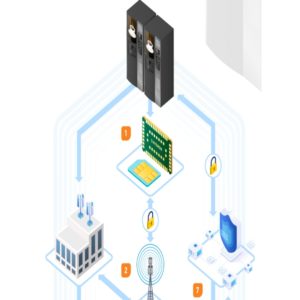
Smart devices and internet-enabled products can increasingly be found in all walks of life as our previously unconnected cities and towns are transformed into versatile and evolving digital hubs. Such is the universality of these devices, that the term the ‘Internet of Things’ has transitioned from being a phrase reserved solely for technology enthusiasts to a household term in just a handful of years. This boom has, in term, acted as a catalyst for the widespread development of connected products.
Yet this enthusiasm for smart technologies hasn’t always been accompanied by the necessary expertise required to deploy connected products. In the last few years, countless of examples of insecure and ineffective IoT products have hit the headlines – including the likes of serious security flaws found in popular smart toys.
Yet despite such activity in this space, it’s not always completely obvious how IoT beginners should take their first steps in the sector. After all, the prospect of taking your once ‘dumb’ coffee machine or car and making it ‘smart’ can be a seriously daunting prospect.
That’s why we’ve developed a video series called IoT Masters where we guide new entrants through a series of steps designed to help you kick off your exciting IoT project – from the key principles underpinning the Internet of Things, through to how to manage effective lifecycle management.
In this blog, we boil the IoT down to the basics to get you set off on your smart journey.
Build to succeed
Before getting started, it’s important to understand some of the theory underpinning the IoT. There are seven key building blocks that make up any smart project, all of which need to be accounted for at the start of any IoT venture. These are; the sensors, connectivity, application logic, the network, application on The Cloud, data analytics and security.
While the video above will give some more insight into how these elements all work together, it’s important to note that for a device to successfully and securely connect to the IoT, it needs to make sure all of these elements are fully accounted for.
Know your business
The above building blocks should be baked into any IoT campaign, but that doesn’t mean that every project is the same. There’s an ocean of difference between the needs of a smart car and a connected vending machine, for example.
The main question you need to ask yourself is why you are doing this IoT project. Are you looking to transition from a pure manufacturing business – where you are developing products – to an always-on serviced based one? Are you hoping to use customer data to improve your product iteratively or to monetise usage trends and share with the wider IoT ecosystem? These sorts of questions will determine the kind of connectivity, security and energy source you use.
For example, a connected car moves at high speeds, across borders and the connectivity element will have to live in a high temperature, high vibration environment under the vehicle’s bonnet. Since it will invariably be driving between countries, it needs the versatility to transition between networks too. This instantly presents a very different use case to a smart meter, which has to contain elements that are less obviously durable but have a battery that can last for up to 15 years as well as a supremely energy efficient network.
With that in mind, it’s vital that business owners weigh up characteristics such as performance, resilience, mobility, lifetime management and power availability at the genesis of any IoT project.
If you are interested in finding out more about becoming an #IoTMaster, check out our other great IoT content below, and do get in touch with the team with any questions.
- Thales’ IoT portal
- To view all IoT Masters videos, check out our playlist here
from IoT – Thales blog https://ift.tt/2M8tvyc
 Reviewed by iot portal
on
8:08 AM
Rating:
Reviewed by iot portal
on
8:08 AM
Rating:
No comments: